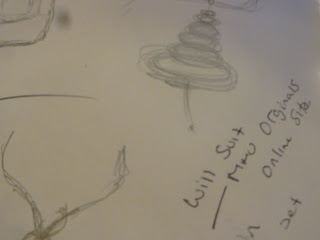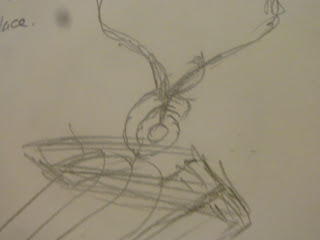Manchester Metropolitan Design Shows
Initially I thought it would be a good starting point to
view and form an opinion regarding the work produced by the numerous students
over the past 30 -40 years. Through the MMU Visual Resources albums, I studied
the different shows, looking at exhibitions from fashion design to graphic
design, focusing on the 3 D Design elements. By this research I was hoping to
discover the mood and the feeling of the University and if dramatic changes or
trends has taken place. It was an exercise in learning the ethos and pulse of
this institution.
Looking at the shows from the 1960’s to present day it was
apparent instantly that the designs were in a sense re inventing products, the
shows displayed tables, chairs, ornaments, but the different eras showed how
trends changed or adapt. The shape, size, style, colour changed, but ultimately
a chair is a chair. This is not a
complaint or undermining the work, it is just an observation, but already has
given me a lead on my project aim.
I really do like the idea of re invention or re use or may
be re claim and I believe I can take this forward with a product that I design.
The exhibitions are inspiring and show well designed high
quality products, fit for purpose, which is key factors that I need to
consider.
It was interesting
to view the various shows and visualise how trends did change over time. I
thought the 1960’s show gave the impression of well made and functional
products, but also creating a cold feeling. The colours seemed dull and
unimaginative, work man like in style.
In contrast the 1981 exhibition oozes warmth, using rich
colours, simple in design using linear lines. In my opinion I do like the mood
these pieces create, elegant, yet clean and simple.
The 1995 exhibition showed how the designs changed from
clean lines and shapes to a more curves being involved in the designs. This an
interesting change from linear to curves, with the curves giving a softer feel.
I do like the idea of using curves within my design. The designs are simple and
the tones light. The simple designs emphasizes that a product does not have to
look complicated to be fantastic.
The 2007 exhibition takes the trends from 1995 and moves a
step further in mixing curves and linear designs, keeping the light textures.
This was my favourite show as it indicated that mixing shapes and lines helped
create a more rounded product. Simplicity again showed as a key factor, but
again chairs, tables ornaments were being designed, but to new trends and
styles. Again I am feeling that re use/ re invent theme.
The 2010 exhibition
did scream “Ikea”
Crisp, clean, light colours, simple and good designs, important
key factors in delivering a good product.
An excellent display
and shows the contrast how trends and styles changed over the past 30 -40
years, but still following the golden rules of design, simple, functional and
made to a high standard.
I have enjoyed this research and it as stimulated some good
ideas. I know the designs I create would ideally be simple, combinations of
curves and linear lines, clean and elegant, but functional and made to a high
standard.
This has given me a broad idea which direction my project
will take. I would like to develop the idea of re inventing or re using a
product and potentially changing its function.
The next part of the process is to focus on some
specifically designed products made by MMU students from the exhibitions, the
intention being to stimulate my thoughts and help with the design process.














































